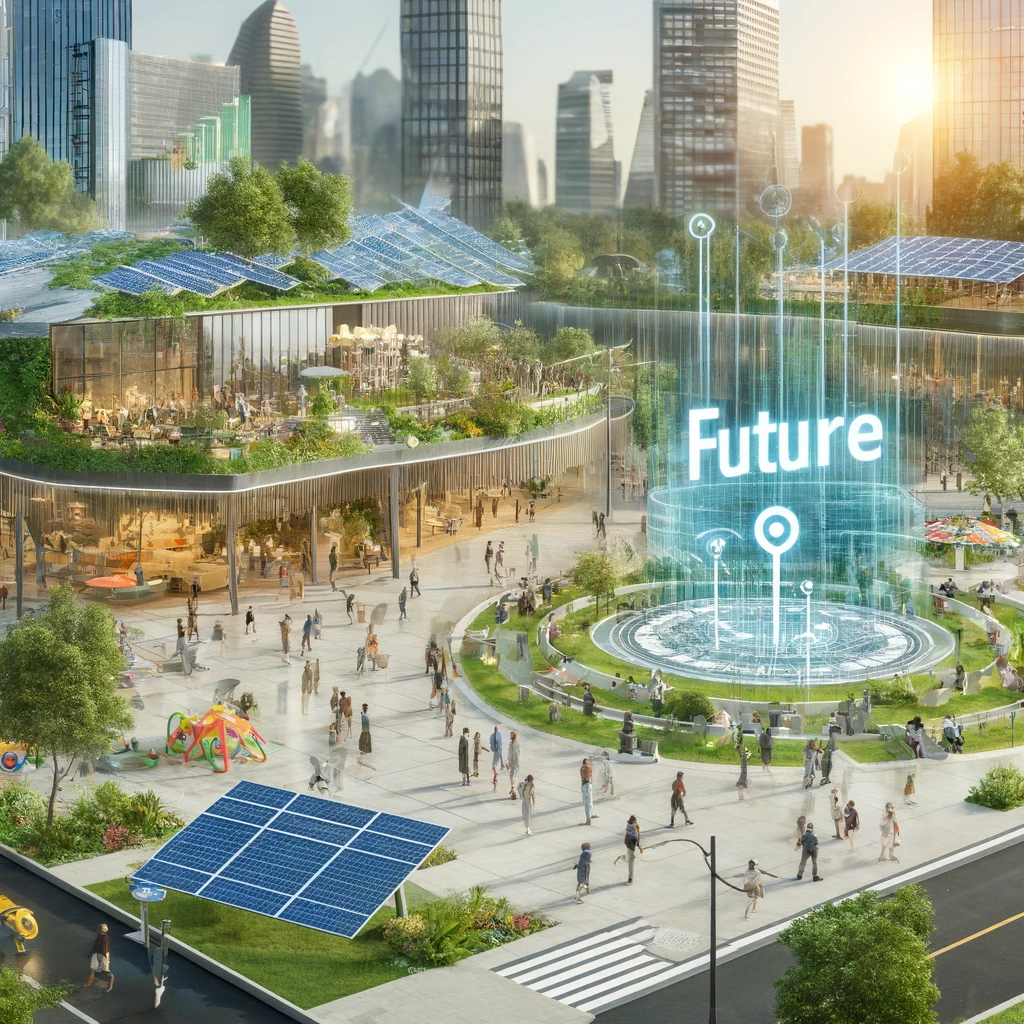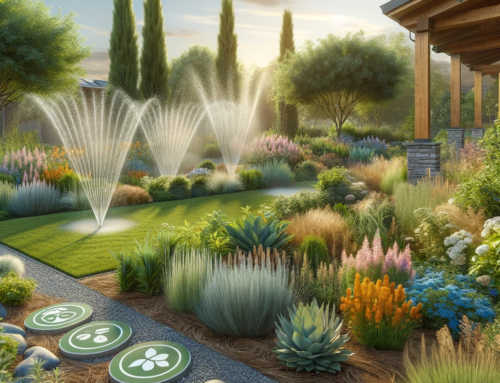Public spaces serve as the heartbeat of our cities and communities, reflecting the evolving needs and values of our society. Significantly, landscape architecture plays a pivotal role in shaping these environments, ensuring they are not only aesthetically pleasing but also functional, inclusive, and sustainable. Consequently, the future of public spaces is being redefined by innovative design approaches and the increasing involvement of public practice in landscape architecture. This article delves into the emerging trends and the critical role that public practice plays in creating spaces that foster community, celebrate cultural heritage, and enhance environmental resilience.
Key Takeaways
- Innovative landscape architecture is transforming abandoned spaces into vibrant community hubs, merging technology with nature, and emphasizing environmental resilience in urban planning.
- Public practice in landscape architecture is essential for fostering economic vitality, managing public assets, and ensuring public engagement and representation in the design process.
- Adherence to regulations, advancement in sustainable research, and documentation are crucial for the successful implementation of landscape projects that benefit the public.
Innovative Approaches to Public Space Design Landscape Architecture Trends

Reimagining Abandoned Spaces for Community Use
Imagine walking through a once-abandoned lot, now transformed into a bustling community garden, alive with the chatter of neighbors and the vibrant colors of locally grown produce. This is the power of reimagining abandoned spaces for community use. Urban areas across the globe are recognizing the potential of underutilized spaces to create environments that foster social interaction and enhance the quality of urban life.
- Adaptive reuse of spaces like old airfields or industrial sites can provide much-needed green areas in concrete jungles.
- By incorporating elements that promote physical and mental well-being, such as natural light and vegetation, these spaces become sanctuaries for city dwellers.
- Celebrating local history and culture, these redesigned spaces can also serve as educational platforms and symbols of community resilience.
The process involves not just the creative repurposing of space but also a collaborative effort that includes public engagement, careful planning, and sustainable practices. As landscape architects, you have the opportunity to lead the charge in transforming these forgotten areas into vital assets that contribute to the environmental, social, and economic vitality of communities.
Integrating Technology and Nature in Landscape Architecture Trends
As you delve into the realm of landscape architecture, you’ll find that the fusion of technology and nature is not just a trend, but a transformative movement. Indeed, landscape architects are now harnessing the power of AI technologies to revolutionize the field, offering innovative solutions that enhance project design and execution.
- The interconnectivity of cultural and natural processes is at the forefront, allowing for dynamic, responsive designs that evolve with their environment.
- Ecological principles are increasingly integrated into design practices, choreographing spatial flows and enriching human-nature interactions.
- Modern landscaping principles, such as minimalism and symmetry, are employed to create a seamless flow between indoor and outdoor spaces, fostering harmony.
This approach not only creates visual and experiential interest but also provides substantial environmental benefits. By reducing urban heat islands and improving air quality, the integration of technology and nature in landscape architecture is shaping a sustainable future for public spaces.
Prioritizing Environmental Resilience in Urban Planning
In the face of climate change, urban planning must prioritize environmental resilience to ensure sustainable futures for our cities. Innovative solutions are essential in addressing the multifaceted challenges posed by urban development and climate adaptation. By integrating green infrastructure, such as rain gardens and permeable pavement, urban landscapes can significantly reduce water runoff and minimize environmental impact.
Key strategies include:
- Utilizing sustainable and low-impact materials
- Designing energy-efficient spaces
- Incorporating renewable energy systems
These approaches not only address immediate environmental concerns but also contribute to the long-term health and vitality of urban areas. The integration of eco-friendly practices, like the use of native plants and water-efficient irrigation systems, further enhances the sustainability of urban landscapes. As we reimagine our cities, it’s crucial to consider the unique climate of each area, creating spaces that are not only aesthetically pleasing but also functional and resilient.
Celebrating History and Culture through Landscape Architecture Trends
In the realm of landscape architecture, the celebration of history and culture is not just about aesthetics; it’s about weaving the narrative of a place into its physical form. Designers are tasked with the delicate balance of honoring the past while creating spaces that are relevant for today’s communities. This involves a deep understanding of the historical context, the cultural significance of the area, and the stories that have shaped it.
- Engaging local artisans and craftsmen in the design process can help to embed cultural authenticity into public spaces.
- Incorporating indigenous plants and materials not only pays homage to the local heritage but also contributes to the ecological sustainability of the project.
- Thoughtful integration of art installations and interpretive signage can provide educational value and deepen the connection between visitors and the space.
Moreover by prioritizing these elements, landscape architects can create public spaces that are not only functional and resilient but also serve as living monuments to the community’s heritage.
The Role of Public Practice in Landscape Architecture

Fostering Economic Vitality and Public Asset Management
In the realm of public practice in landscape architecture, economic vitality is a cornerstone. Public spaces are not just aesthetic additions to the urban fabric; they are economic engines that enhance the value of surrounding areas and stimulate local economies. By redeveloping underutilized areas into vibrant parks and plazas, cities can create hubs of activity that attract businesses and tourism, contributing to a thriving urban environment.
Effective public asset management ensures that these spaces remain functional, safe, and attractive over time. Moreover this involves a multifaceted approach, including:
- Public Communications
- Contract Administration
- Data Collection & Analysis
- Engagement
- Project Management
As landscape architects, your role extends beyond design to include stewardship of these public assets. This means not only creating spaces that acknowledge history and place but also ensuring their resilience and adaptability to serve future generations. The ASLA Public Practice Subcommittee highlights the importance of landscape architects in the public sector, advocating for a career path that is both challenging and rewarding, with the potential to shape communities for the better.
Enhancing Public Engagement and Representation in Design
In the realm of landscape architecture, your role extends beyond mere design; it involves becoming a facilitator for community voices. Engaging and collaborating with community members is not just an essential skill but a cornerstone of public practice. By actively involving residents in the design process, you ensure that public spaces reflect the diverse needs and aspirations of those who use them.
To enhance public engagement, consider these steps:
- Conduct surveys and workshops to gather community input.
- Utilize social media platforms to reach a wider audience and encourage participation.
- Establish transparent communication channels to keep the community informed and involved throughout the project.
Representation in design goes hand in hand with engagement. Subsequently it’s about ensuring that the spaces you create are inclusive and accessible to all. This means considering the needs of different age groups, abilities, and cultural backgrounds. By doing so, you contribute to the creation of public spaces that are truly for everyone, fostering a sense of ownership and pride within the community.
Navigating Regulation and Compliance in Public Projects
As a landscape architect, you’re well aware that navigating regulation and compliance is a critical aspect of public projects. The Landscape Architects Technical Committee (LATC) regulates the practice of landscape architecture to ensure public safety and welfare. This involves adhering to the Landscape Architects Practice Act, which sets forth the standards for professional conduct and project execution.
Your role may encompass a range of responsibilities, from public communications to contract administration and ensuring that all aspects of your project align with regulatory requirements. Additionally here are some key areas to focus on:
- Understanding and applying the relevant local, state, and federal regulations
- Ensuring that design proposals meet all compliance standards
- Working closely with regulatory bodies to navigate the permitting process
Staying informed about changes in legislation and best practices is essential for the successful delivery of public projects. Furthermore, engaging with professional bodies and participating in continuous education can help you remain at the forefront of regulatory knowledge in landscape architecture.
Advancing Research and Documentation for Sustainable Practices
As landscape architects, you play a pivotal role in shaping the future of our public spaces. Advancing research and documentation for sustainable practices is not just about innovation; it’s about ensuring longevity and relevance in a rapidly changing world.
To achieve this, consider the following steps:
- Engage with interdisciplinary teams to broaden the scope of research and incorporate diverse perspectives.
- Document case studies meticulously, focusing on both successes and areas for improvement.
- Utilize platforms like the ASLA’s guides on climate change mitigation and resilient design to stay informed and inspire new ideas.
By doing so, you contribute to a body of knowledge that not only guides current projects but also informs future generations of landscape architects. This ongoing process of learning and sharing is crucial for the development of resilient, adaptive, and culturally significant public spaces.
Conclusion
As we have explored throughout this article, the future of public spaces is being shaped by innovative trends in landscape architecture that prioritize community engagement, historical preservation, environmental resilience, and economic vitality. Specifically, landscape architecture trends in public practice are at the forefront of creating functional, liveable, and safe environments that cater to the larger social goals of our communities. With a focus on collaboration, technology, and sustainability, these professionals are reimagining how we interact with our surroundings. Moreover, the integration of AI and adaptive reuse strategies, along with the dedication to public practice principles, ensures that our public spaces will continue to evolve in ways that honor our past, embrace the present, and anticipate the needs of future generations.





